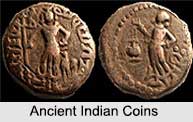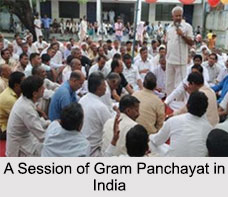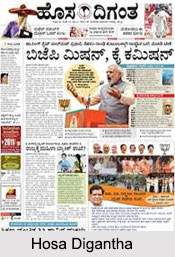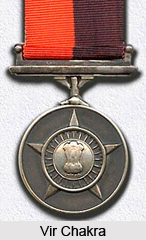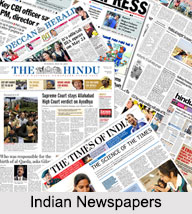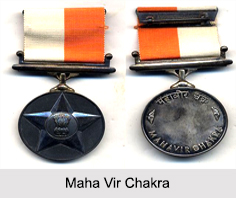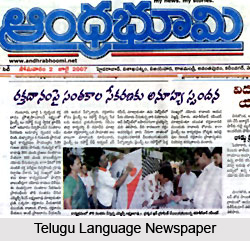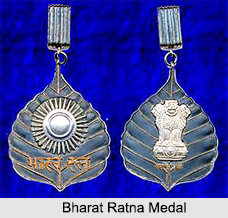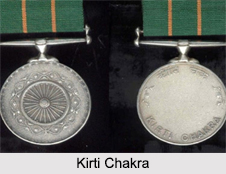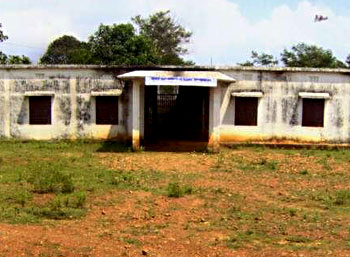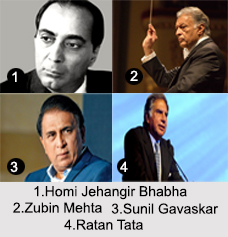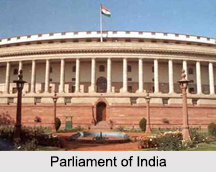 Government of India is democratic, which means it is a government `by the people, for the people and of the people`. India has parliamentary system of government, which is based on universal adult franchise. In parliamentary system of government, Parliament is supreme and there is fusion of executive and legislative powers. The President is the constitutional head of the executive branch of the government. All the executive powers are exercised by the Council of Ministers, with the Prime Minister as its head. The parliamentary system of government is a replica of the Westminster-style. The Constitution of India came into force on 26th of January, 1950. The Preamble of the Constitution defines India to be a sovereign, socialist, secular and democratic republic. During 1951-1952, the first general election to form the Government of India was held under the Constitution. After Independence, the whole Indian political scenario changed, with the Congress in power. In 2014 general election, Bharatiya Janata Party (BJP) turned out to be victorious. As of July, 2017, the BJP government, led by Prime Minister, Narendra Modi is governing 18 states of India.
Government of India is democratic, which means it is a government `by the people, for the people and of the people`. India has parliamentary system of government, which is based on universal adult franchise. In parliamentary system of government, Parliament is supreme and there is fusion of executive and legislative powers. The President is the constitutional head of the executive branch of the government. All the executive powers are exercised by the Council of Ministers, with the Prime Minister as its head. The parliamentary system of government is a replica of the Westminster-style. The Constitution of India came into force on 26th of January, 1950. The Preamble of the Constitution defines India to be a sovereign, socialist, secular and democratic republic. During 1951-1952, the first general election to form the Government of India was held under the Constitution. After Independence, the whole Indian political scenario changed, with the Congress in power. In 2014 general election, Bharatiya Janata Party (BJP) turned out to be victorious. As of July, 2017, the BJP government, led by Prime Minister, Narendra Modi is governing 18 states of India.
Structure of Government of India
The structure of the Government of India is very broad and comprises of the Parliament, Lok Sabha, Rajya Sabha, Council of Ministers and Indian Government Departments. This structure is described below.
Parliament
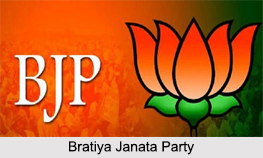 Parliament occupies a prominent position in the structure of the Government of India. It is the representative institution of the people. It is through the Parliament, that the sovereign will of the people finds expression. Article 79 of the Constitution of India states that there shall be a Parliament for the union and the government will be responsible for legislature. The legislature will in turn be responsible to the people, who are the ultimate sovereign. The Parliament consists of the President and two houses- the Lok Sabha or the House of Parliament and the Rajya Sabha or the Council of States. The continuation of a President or the Head of State in the parliamentary form of government symbolizes its true character. The President does not participate in the discussions of the two houses, but exercises several powers and performs important functions. The President of India is elected by an Electoral College consisting of the elected members of the two houses of Parliament and the Legislative Assemblies of the state.
Parliament occupies a prominent position in the structure of the Government of India. It is the representative institution of the people. It is through the Parliament, that the sovereign will of the people finds expression. Article 79 of the Constitution of India states that there shall be a Parliament for the union and the government will be responsible for legislature. The legislature will in turn be responsible to the people, who are the ultimate sovereign. The Parliament consists of the President and two houses- the Lok Sabha or the House of Parliament and the Rajya Sabha or the Council of States. The continuation of a President or the Head of State in the parliamentary form of government symbolizes its true character. The President does not participate in the discussions of the two houses, but exercises several powers and performs important functions. The President of India is elected by an Electoral College consisting of the elected members of the two houses of Parliament and the Legislative Assemblies of the state.
Rajya Sabha and Lok Sabha
Rajya Sabha consists of not more than 250 members. Of these, 233 members represent the states and the union territories and 12 members are nominated by the President. Members to the Rajya Sabha are elected by the elected members of Legislative Assemblies of the concerned states. Rajya Sabha is not subject to dissolution in contrast to the Lok Sabha and one third of its members retire every second year. The Lok Sabha is composed of representatives of the people chosen by direct election on the basis of universal adult franchise. The Lok Sabha consists of 545 members, with 2 members nominated by the President to represent the Anglo-Indian Community. The term of the Lok Sabha is for 5 years. It gets dissolved under the circumstance of failure of the leading political party to prove clear majority or a no-confidence motion.
Council of Ministers
Article 74 (1) of the Constitution states that there shall be a Council of Ministers to aid and advise the President, who shall act in accordance with such advice. The Council of Ministers is collectively responsible to the Lok Sabha. This Council comprises of Cabinet Ministers, Minister of States and Deputy Ministers. It is the Prime Minister who communicates all decisions to the Council of Ministers relating to administration of affairs of the union and proposals for legislation to the President. Each department has an officer designated as secretary of the Government of India to advise Ministers on policy matters and general administration. The Cabinet Secretariat has important coordinating role in decision making at highest level and operates under the direction of the Prime Minister.
Indian Government Departments
Government of India has certain departments that carry on their duties under the supervision of several ministries. The central ministry is a part of the executive branch of the Government of India. Depending on the federal character of the political system of India, Indian Government Departments are divided into central government departments and state government departments. The central ministry works independently and the state governments work under the supervision of the central government. Some of the Indian Government Departments are the departments of Agriculture, Home Affairs, Commerce and Industry, External Affairs,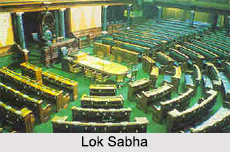 Corporate Affairs, Defence, Information and Broadcasting, Civil Aviation, Human Resource Development, Railways, Environment and Forests, Finance and Company Affairs, Health and Family Welfare, Heavy Industries and Public Enterprises, Petroleum and Natural Gas, Power, Labour, Tourism, Women and Child Development and Youth Affairs and Sports. These departments work for public welfare. The ministers of these government bodies are chosen through general election, after an interval of 5 years. But the bureaucrats and other officials are appointed through competitive exams that are held throughout India. For example, Civil Service Examinations (CSE) conducted by the Union Public Service Commission (UPSC) help to appoint Indian Administrative Service (IAS), Indian Police Service (IPS) and Indian Forest Service (IFS) officers.
Corporate Affairs, Defence, Information and Broadcasting, Civil Aviation, Human Resource Development, Railways, Environment and Forests, Finance and Company Affairs, Health and Family Welfare, Heavy Industries and Public Enterprises, Petroleum and Natural Gas, Power, Labour, Tourism, Women and Child Development and Youth Affairs and Sports. These departments work for public welfare. The ministers of these government bodies are chosen through general election, after an interval of 5 years. But the bureaucrats and other officials are appointed through competitive exams that are held throughout India. For example, Civil Service Examinations (CSE) conducted by the Union Public Service Commission (UPSC) help to appoint Indian Administrative Service (IAS), Indian Police Service (IPS) and Indian Forest Service (IFS) officers.
Powers of Government of India
The Government of India has been vested with the power to take over the state in matters related to national security. It looks after foreign trade and trade affairs between states. It can declare a state of war and raise and maintain armed forces. It also has other powers like engaging in diplomacy and authorizing treaties with foreign countries, reducing oppression and mismanagement in a company, conserving and improving the environment and controlling pollution.







